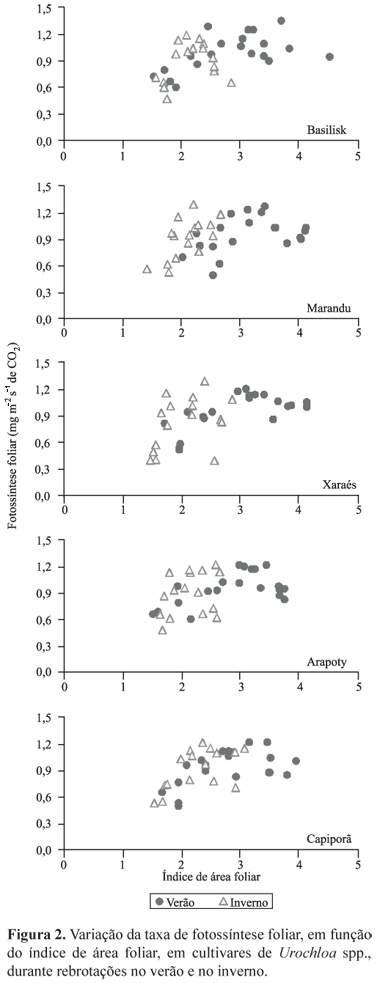The objective of this work was to quantify the leaf photosynthesis during forage regrowth and to estimate the canopy photosynthesis of two species and five Cultivars of brachiaria, based on leaf architecture and light environment in the summer and winter. Four cultivars of Urochloa brizantha (Marandu, Xaraés, Arapoty e Capiporã) and one of U. decumbens (Basilisk) were evaluated. It was used a randomized complete block design with four replicates. The plots were irrigated and fertilized with 220 kg ha-1 per year of N and K2O. Carbon assimilation in leaves and canopies, leaf area index (LAI) and light interception (LI) were evaluated. Leaf photosynthesis did not vary among cultivars or seasons, and there was assimilation of 0.91 mg m-2 s-1 CO2. In early regrowth, the canopy photosynthetic potential in the summer and winter was low (0.80 mg m-2 s-1 CO2); however, winter canopies showed greater increase in carbon assimilation per unit increase of LAI. Canopy photosynthesis at the regrowth end was 15% lower in the winter, in comparison to the summer, and the correlations of both leaf and canopy photosynthesis with forage production were low. The leaf area index has a strong impact on the simulation model results of canopy photosynthesis of brachiaria.
Brachiaria; Urochloa; canopy photosynthesis; leaf photosynthesis; leaf area index; modeling



